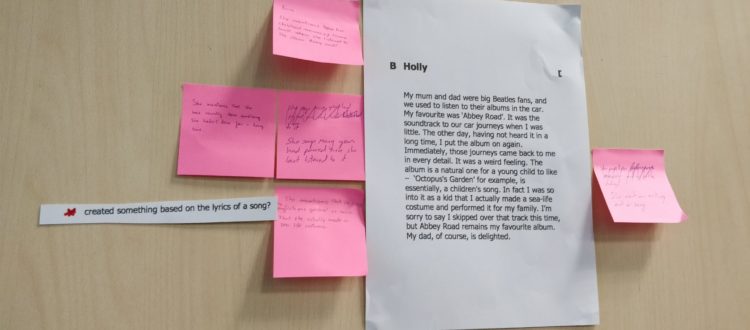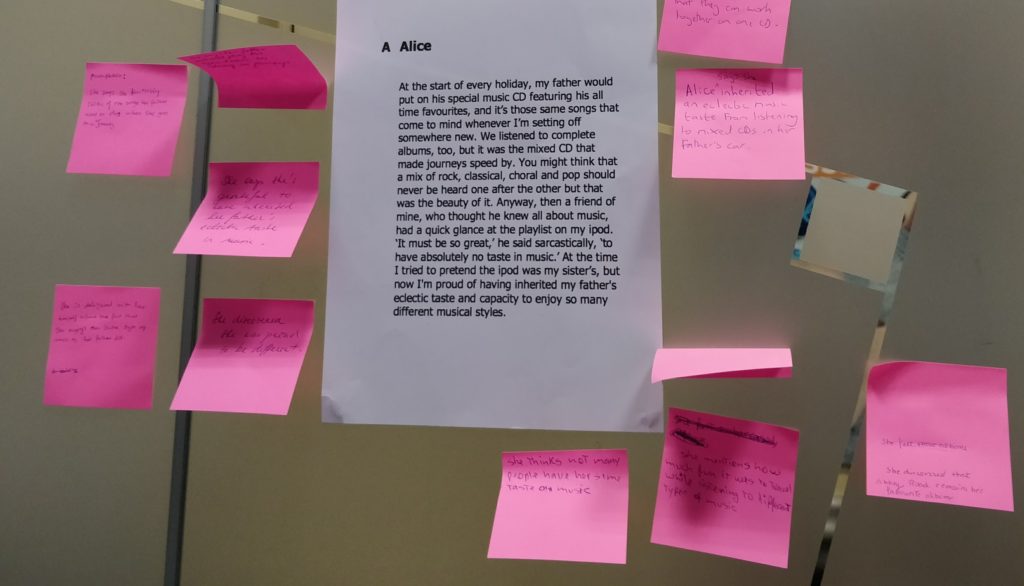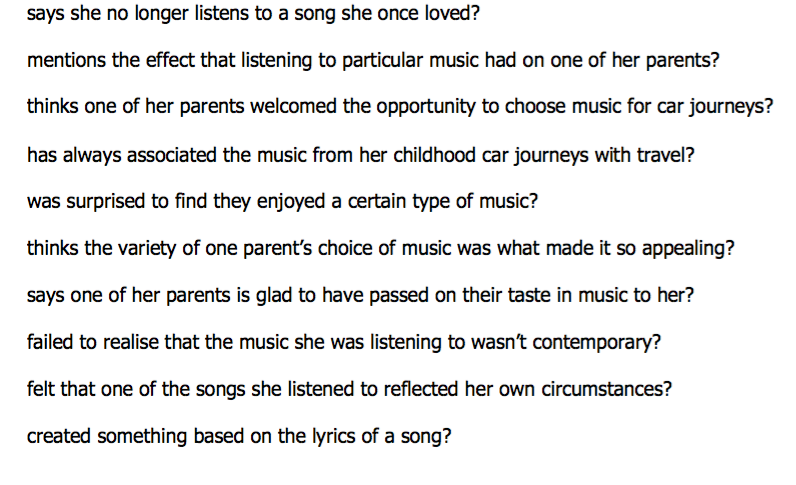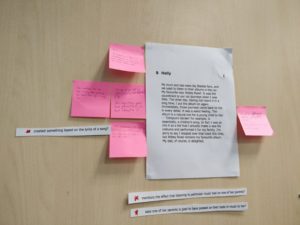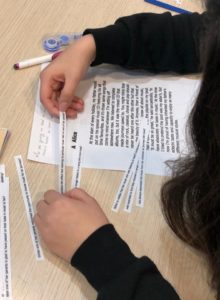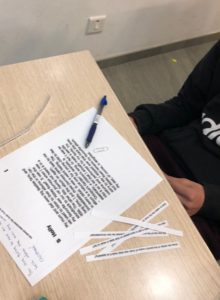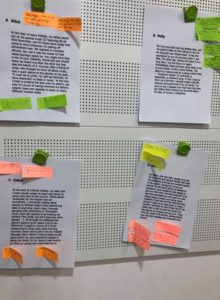Interacting with B2 First Part 7 Reading
In this post, I’m sharing an activity I did at a recent seminar in San Sebastian.
I took a B2 First Reading and Use of English Part 7 Matching task from Sample Papers 3.
First, I separated the texts and enlarged each of them and printed them onto A4 sheets of paper. In class, give different readers a text to read, trying to make sure that there are roughly the same number of readers per text. (This will depend on the number of students you have in your class.)
Text A
Text B
Text C
Text D
Asked the readers of each text to read the whole text for gist and to complete the rubric (write this on the board or project onto a screen):
You are going to read an article in which four people talk about _ _ _ _ _ _ _ _ _ _ _ _ _ _ _ _ to _ _ _ _ _
_ _ _ _ _ _ _ _ during their _ _ _ _ _ _ _ _ _.
(You are going to read an article in which four people talk about the music listened to on car journeys during their childhood.)
Next, give them two post-its and ask them to write a sentence on each to summarise two main points of their text.
To help them do this, give them five possible sentence starts to complete:
She says …
She mentions …
She thinks …
She felt …
She discovered that …
Stick copies of the texts on the walls and ask each person to stick their post-its next to the part of the text that their information came from.
They then compare their sentences with the other readers. (They usually coincide, although some of the texts might have 3 or 4 points expressed.)
Here is what some teachers produced for Text A:
Next, give the students individual sentences (from the original Part 7 task) on individual slips (I printed these on card and cut them up).
Ask them to decide if each sentence matches the information in their text. If it does, they should stick it next to the part of the text it matches on the wall (using blutack).
What happens is that the sentences students have written align closely with the sentences from the exam task, or, if they haven’t focussed on one particular point, they are familiar enough with the text to make the match.
As a follow-on from these texts, students could discuss their tastes in music, car journey music and memories, with questions like:
What did you listen to on car journeys when you were younger?
Are your tastes in listening eclectic like Alice?
Are there any songs that you identify with like Chloë? Or songs you can’t listen to any more like Holly?
Do you share music tastes with people in your family?
Do you think talent shows like The X Factor, Got Talent or Operación Triunfo are worth watching?
And the class could create a car journey playlist on Spotify!
On a final note, I would suggest that this reading and writing sentences activity would work very, very well with C1 Advanced Reading and Use of English Part 6 – such a difficult task to do interactively in class!
I am delighted to share here some photos and feedback I received from a teacher who tried this activity out with her students!
Thank you Elena Kaourani for the feedback and the photos of your students engaged in this activity!


